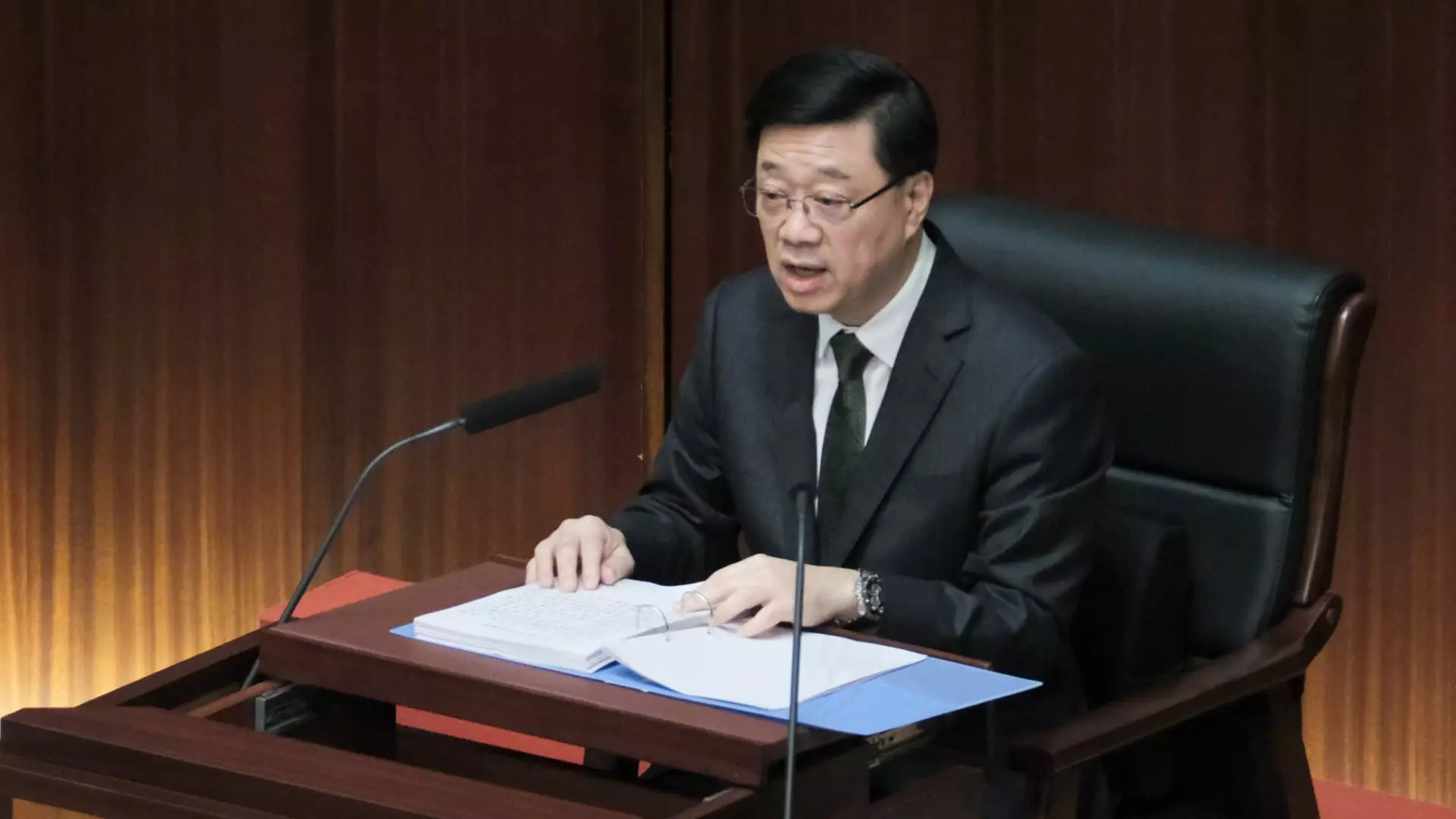In a recent address, Hong Kong’s Chief Executive, John Lee, unveiled new strategies aimed at alleviating the city’s housing affordability crisis, which has become a pressing concern for many residents. Lee acknowledged the significant challenge that prospective homeowners face in an increasingly inflated real estate market, particularly for the younger demographic struggling to make a foothold. His remarks highlight the urgency of finding sustainable solutions to a problem that has persisted for over a decade, as evidenced by Hong Kong’s ranking as the least affordable city for housing globally.
One of the major initiatives proposed is the introduction of preferential treatment for applicants under 40 years of age seeking subsidized housing. This demographic shift reflects a growing awareness of the obstacles faced by younger people in a city known for its high cost of living. With properties soaring beyond reasonable financial reach, the government’s initiative to allocate an additional ballot number through the Hong Kong Housing Authority is a welcome development, potentially amplifying chances for younger residents to secure homes under the subsidized Home Ownership Scheme.
The plan to increase the quota for the “White Form Secondary Market Scheme” by 1,500 units reserved explicitly for the under-40 age range indicates a targeted approach to address the immediate housing challenges faced by youth. However, while these measures aim to increase accessibility, they also bring to light the concerning trend where young residents are reportedly declining advancement opportunities in their careers just to qualify for public housing. Such sacrifices illuminate the depths of the housing crisis, raising questions about the broader economic implications for the city’s future workforce.
Moreover, the continuation of the Youth Hostel Scheme, which subsidizes the rental of hotels and guesthouses as temporary housing options, provides a necessary stopgap for those unable to afford permanent residences. It exemplifies a multifaceted approach to housing that considers the varying circumstances of its residents. However, critics may argue that these measures fail to tackle the root causes of Hong Kong’s housing crisis and do little to address the quality of life issues surrounding substandard accommodation.
With over 100,000 “shoe-box sized” subdivided flats currently in existence, the Hong Kong government is facing a daunting task in improving living conditions for its residents. In his address, Lee proposed transforming “substandard” units into “Basic Housing Units,” which would adhere to new minimum requirements, including basic amenities and adequate space. This initiative signals an awareness of the need for improved living conditions, particularly among the low-income population residing in dangerously cramped spaces.
Furthermore, the ambitious target of constructing around 30,000 public housing units by 2027-2028 aims to significantly reduce the long waiting times for public housing, which currently average 5.5 years. Lee’s assertion that this wait could be shortened to 4.5 years by 2026-2027 presents a glimmer of hope for many residents. Yet, the challenge remains whether the government can meet these timelines and whether these units will be built robustly and sustainably, fostering a sense of community rather than isolation.
Lee’s policy address differed significantly from previous ones, which primarily focused on issues related to national security and post-pandemic recovery. This shift towards prioritizing residents’ quality of life illustrates a growing recognition of the housing crisis as integral to the city’s social fabric and economic vitality. The evident emphasis on improved livelihoods reflects an understanding that housing stability is fundamental not just to individual families but to the overall health of Hong Kong’s society.
While John Lee’s announcements present a series of promising steps toward alleviating housing woes, it is crucial for the Hong Kong administration to follow through effectively. The ability to deliver on these potential solutions will ultimately shape the future landscape of housing in the city, determining not just affordability, but the quality of life for its residents. As the spotlight remains on this unresolved crisis, the community and policymakers alike must stay engaged in a dialogue that fosters transparency, accountability, and innovation for all residents.

